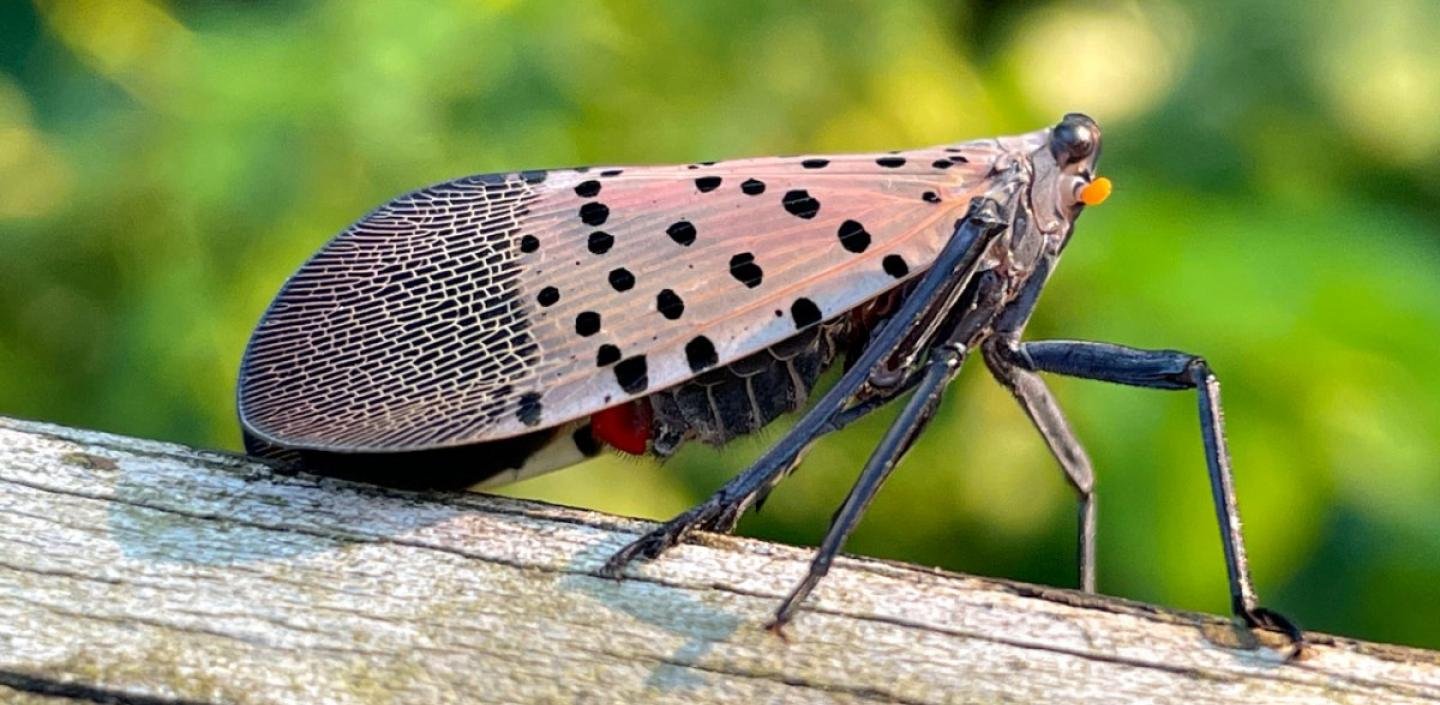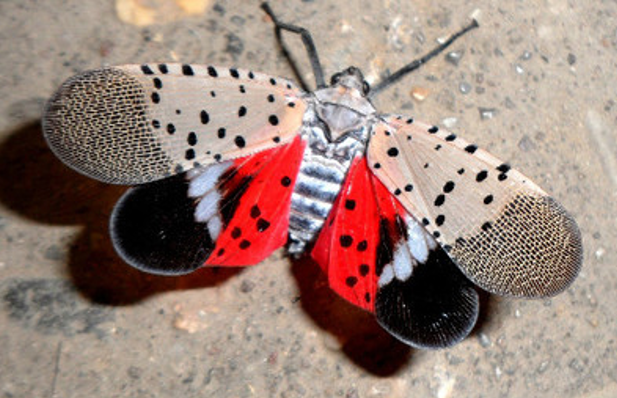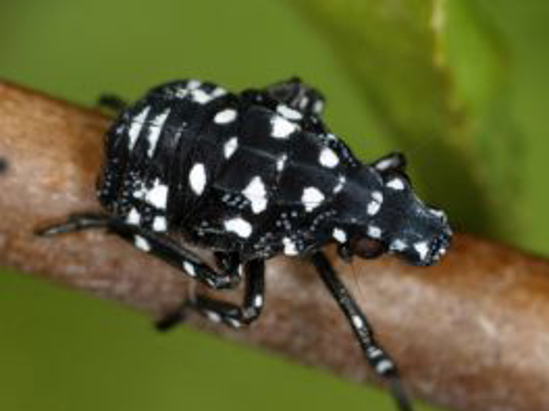SPOTTED LANTERNFLY: A THREAT TO OUR PLANTS
They are everywhere, dead or alive, but who are they?
LET’S SHED SOME LIGHT ON IT
Lycorma delicatula aka Spotted Lanternfly (SLF) is native to China and was first detected in Pennsylvania in 2014. Its preferred host is the Tree of Heaven but it also feeds on a wide range of ornamental and fruit trees and other plants. SLF is invasive and easily spread by people who can carry the insects or the eggs in their outdoor items. Nymphs (juvenile forms) and adults feed mostly on the invasive Tree-of-Heaven but also on crops like grapes, apples, hops, walnuts, and other hardwood trees such as pines, maples, oaks, sumacs, river birches, and willows.
In this blog we will learn about this recently introduced insect that made the news in matter of a few years!
IDENTIFICATION
SIGNS AND SYMPTOMS
WHAT YOU CAN DO
IDENTIFICATION
Egg masses: usually 1'“ long. Freshly laid egg masses look like white putty and are laid on surfaces like trunks, patios, stones, outdoor furniture etc…with time they harden, darken, and the single eggs become visible.
Nymph (1st-3rd instars): they hatch from the eggs and they grow to only 1/4” long. Black bodies and legs with bright white spots. Very strong jumpers. They tend to feed mostly on Tree-of-Heaven and on new growth such as stems and foliage.
Nymph (4th instars): this is the stage before they become adults. Around 1/2” long, bright red with black stripes and white spots. Still strong jumpers.
Adult: around 1” long, the female is slightly larger than the male. Light brown with black spots, red coloration to the wings visible when jumping or flying. They fly but they often prefer to jump or glide.
New egg masses
Nymph (4th instar)
Old egg masses
Adult
Nymph (1st-3rd instar)
Spotted Lanternfly life cycle
2. SIGNS AND SYMPTOMS
The spotted lanternfly causes damage by feeding on the trees. They are plant sucking insects, meaning they feed by sucking sap from the stems and leaves of trees and shrubs.
Weeping wounds and dark streaks on tree bark;
Honeydew at the base of the tree;
Mold/black fungus growing on top of the honeydew at the base of the trunk;
Increased bees, wasps, ant activity due to presence of sap;
Presence of egg masses, and/or nymphs and adults on the tree.
Adults on a tree trunk.
Oozing wounds and adults of SLF. Photo: Pennsylvania Department of Agriculture
3. WHAT YOU CAN DO:
When preparing for the winter holidays, check outdoor items for spotted lanternfly egg masses, including those items you may bring indoors. Scrape any egg masses into a plastic zippered bag filled with hand sanitizer, then zip the bag shut and dispose of it properly.
Inspect your trees and plants for signs of this pest, particularly at dusk and at night when the insects tend to gather in large groups on the trunks or stems of plants.
Inspect trees (in particular, tree of heaven), bricks, stone, and other smooth surfaces for egg masses.
Trap them! In a bowl add equal parts of dish soap and water, and a couple of spoons of sugar. Or find out how to build a Circle Trap (https://extension.psu.edu/how-to-build-a-spotted-lanternfly-circle-trap).
REPORT THEM: https://extension.psu.edu/have-you-seen-a-spotted-lanternfly
DID YOU KNOW? The Department of Agriculture and Markets has issued a quarantine to restrict the movements of goods from quarantined areas like Delaware, New Jersey, Pennsylvania, Maryland, and Virginia and more, a lot more.
Reference:
https://extension.psu.edu/spotted-lanternfly
https://www.aphis.usda.gov/aphis/resources/pests-diseases/hungry-pests/the-threat/spotted-lanternfly/spotted-lanternfly
https://www.dec.ny.gov/animals/113303.html









